You can use tap water for a planted tank as long as you have done dichlorination to the tap water. You can use a water conditioner to maintain the recommended water parameters, as advised.
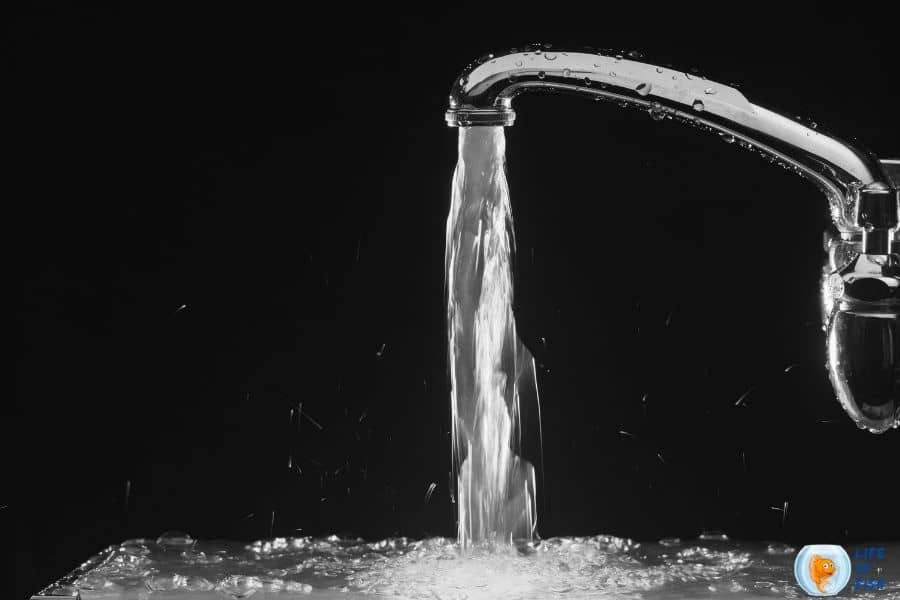
Which water is best for a planted aquarium?
Jump To
- 1 Which water is best for a planted aquarium?
- 2 How do you make tap water safe for an aquatic plant?
- 3 Do plant tanks need a water conditioner?
- 4 Will tap water kill aquatic plants?
- 5 RO water vs. Tap water for a planted tank
- 6 How to remineralize RO water for planted tank
- 7 Is RO water suitable for a planted aquarium?
- 8 How to buffer RO water for aquarium
- 9 RO Water Remineralization for Planted Discus Tanks?
- 10 Summary
Most aquarium plants prefer softer water with low KH and GH levels. The ideal parameters are 5 GH and 1KH.
But, tap water in some areas is high in mineral content. Therefore these water’s KH and GH levels are high.
Although we can lower these amounts with dechlorination and demineralization, it is better to use water with low DH and KH levels.
Reverse osmosis and deionized water technically have zero KH and DH levels. So, it is best to use RO or DI water for planted aquariums.
You can use reverse osmosis or deionized water with remineralizers added if you have unsuitable tap water.
Always keep in mind that proper circulation is always essential to aquatic plants. It will ensure that plants will get a steady supply of nutrients and slow down these algae from growing.
Further, proper circulation will prevent the accumulation of organic debris on the plant’s leaves.
Many aquatic plants grow best on the below-mentioned parameters.
| pH | 6.5 -7.8 |
| Hardness | 50 ppm -100 ppm |
| Alkalinity | 3° and 8° dKH (54 ppm – 140 ppm) |
| Nitrate | 10 ppm |
| Phosphate | Below 0.5 ppm |
| Temperature | 74° and 80° F |
| Water change | Water Change 10% of the water weekly or 25% bi-weekly |
Note – Use an organic adsorption resin or reef carbon on your filters so that it will remove any organic pollutants that tint water and reduce light penetration.
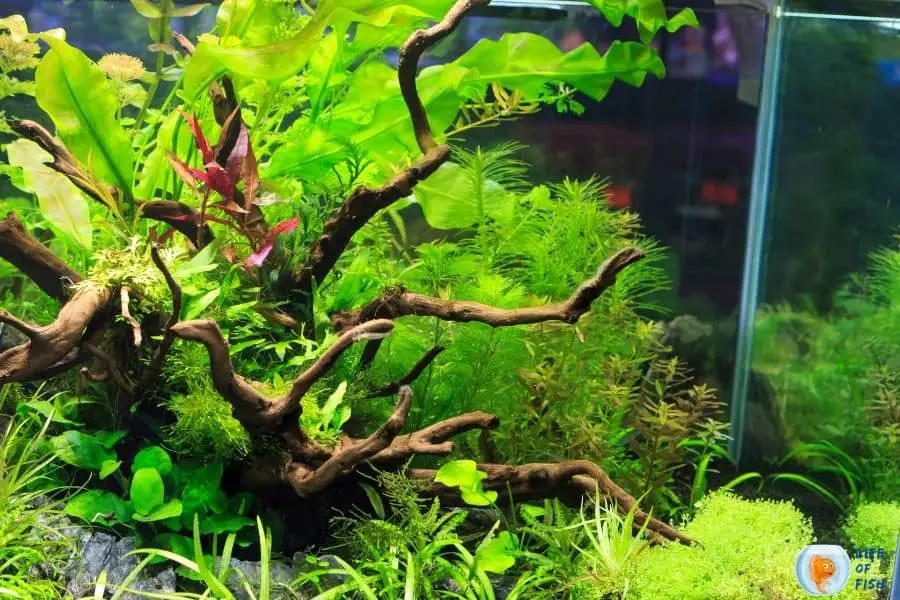
How do you make tap water safe for an aquatic plant?
Regardless of the type of water you use in your aquarium, you must condition your water for it to be safe.
The water should be clean and chemically balanced enough for your aquatic life forms to live in. make sure that you follow these parameters;
pH
pH stands for the power of hydrogen. Which measures the hydrogen concentration of your water on a negative logarithmic scale.
pH will tell whether the water in your tank is acidic or alkaline. The levels must not be too high or too low, and you must always try to keep these pH levels consistent at all times.
These levels may depend upon the aquatic life form or plants living in your tank.
Generally, a freshwater aquatic life form or plants appreciate levels between 6.5 to 8.5, and saltwater life forms might require more alkaline pH since the pH level in the ocean is around 8.1.
gH
gH stands for general hardness, which measures the calcium and magnesium ion concentration in your aquarium water.
General hardness levels may change for some freshwater aquatic life forms and plants and will not be an issue for saltwater aquariums.
kH
kH stands for carbonate hardness, which will measure the bicarbonates and carbonates in the water.
Always keep in mind that low levels of bicarbonates and carbonates will reduce the water to buffer pH, and this will lead to higher pH swings that might even harm any life form living in your tank.
Note- Always keep in mind that your tank must have a good balance of good bacteria and minerals and be free from any harmful substances.
You can also use a water conditioner that will help to remove any chlorine from the tank. If not, you can add baking soda to increase bicarbonate levels.
Ensure to test your tank water and know what it contains and then add or remove substances accordingly until they reach the desired parameters
Do plant tanks need a water conditioner?
Yes, using a water conditioner is essential. Since this will help the plants remove chlorine and heavy metals that may be present in your aquarium.
You might be wondering how does these water conditioners work and what is a water conditioner?.
Aquarium water conditioner is a chemical that comes in a liquid form. You can add this liquid to your aquarium, which will neutralize the chlorine, chloramine, and other harmful substances in tap water.
Water conditioners work by removing the chlorine in the tap water by forming ionic bonds that harm the chlorine.
If this is still not clear for you, let me put this in a more simplifying way: the water conditioner acts like a magnet, which will pull the chlorine molecules away from your water and makes it safe.
If the water has chloramine and chlorine simultaneously, you must go with a water conditioner to split the ammonia/chlorine bond and deal with each individually.
Always advise using tap water conditioners that deals with both conditions
Will tap water kill aquatic plants?
Yes, keeping your plants in just tap water will harm them since chlorine is added to municipal tap water to kill any microbes and make water safe for humans to consume.
But when it comes to aquatic plants, high chlorine levels can be very toxic to plants. Keep in mind that low chlorine levels are suitable for plants since it is a required nutrient for plants.
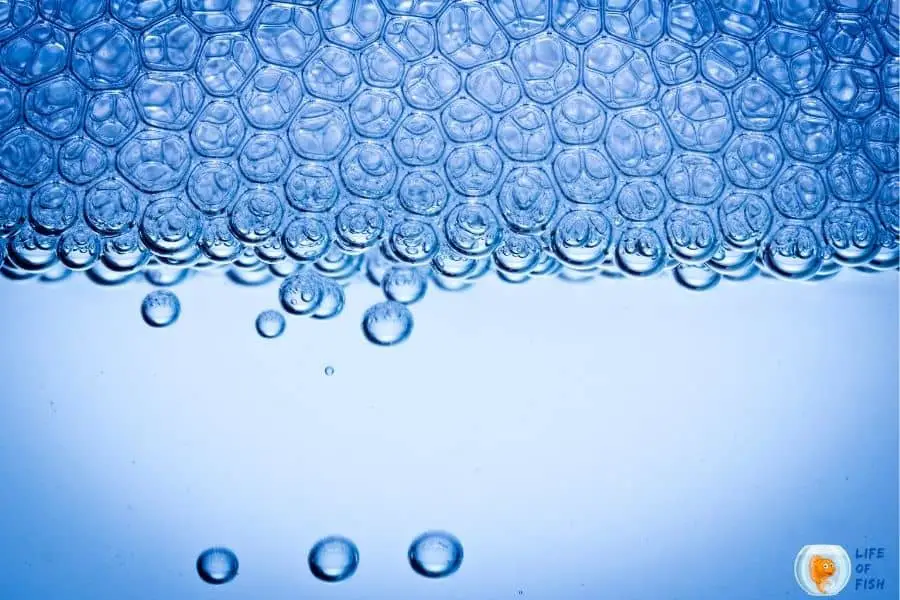
RO water vs. Tap water for a planted tank
Most tropical plants require much softer water which contains low general hardness and carbonate hardness.
It is essential to control the growth of any stringy algae in your tank. You must always try to prevent any algae growth when tarting a planted tank.
You can use 100% RO water reconstituted for plants in your tank. If not, you can mix RO with tap water to create the right blend of minerals.
You can still use both the water types you prefer as long as you follow the required water conditioner parameters.
How to remineralize RO water for planted tank
RO water is simply a chemical and mineral-free water compound. The reverse osmosis process will neutralize the water pH levels and ensure that the water has no hardness.
These types of water give you a blank slate to work.
Water requirements defer from freshwater to saltwater plants. Some aquatic plants need alkaline waters, and others require significant salt content, and ordinary tap water and RO water fail to meet these requirements.
That is where the remineralization process comes in.
Now the question that many has is how to remineralize RO water for planted tank? The answer is simple you can add certain compounds and chemicals like baking soda or any recommended water conditioner and follow the given parameters.
You must make sure to maintain the right conditions at all times.
- Total Dissolved Solids – 390 ppm
- Carbonate Hardness – 8 to 9 kH
- General Hardness – 10 GH
Remineralization is base on the percentage of RO water you are using and the parameter you desire to maintain.
Here is a simple solution recipe that works great on a 5 gallons tank – assuming the water you have used is 100% RO.
- 5 mL of water conditioner (approximately one cup total)
- One teaspoon baking soda
- ¼ teaspoon acid buffer
Make sure that you rinse and wash our tank entirely before starting this remineralization process. Wash it thoroughly using tap water and keep it dry before adding any RO water.
If you can not find the above-said chemicals, you can even use these commonly used ingredients such as a mixture of calcium chloride, Epsom salt, and baking soda.
These ingredients will do wonders to remineralize the RO water of your fish tank.
Note – As a better approach, you can use a remineralizing cartridge in your tank. These are very efficient in re-establishing your tank water’s alkalinity after the RO process has filtered out all the minerals. These will work best in tanks with higher pH requirements
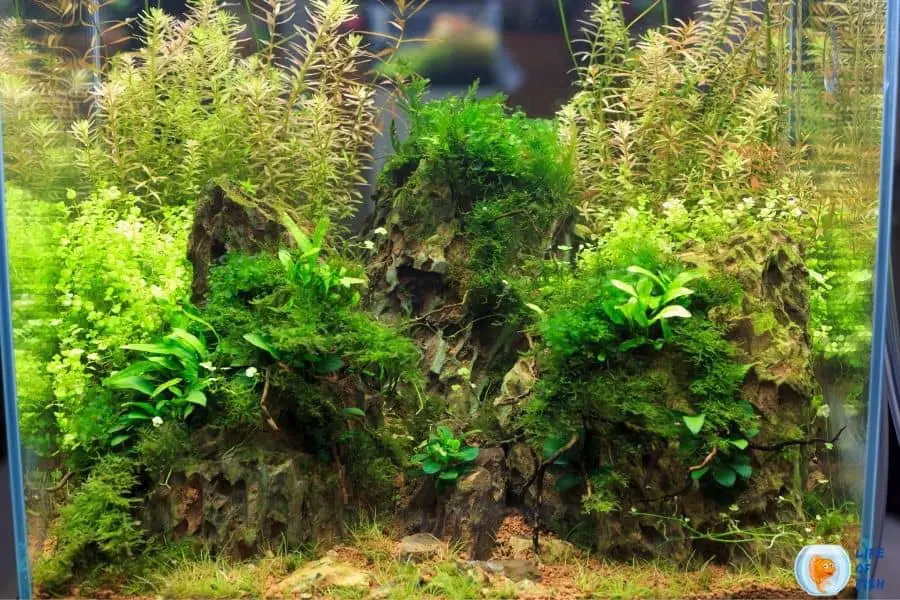
Is RO water suitable for a planted aquarium?
With proper conditioning, you can use RO water for a planted aquarium.
Since this is a blank slate, you can make the required adjustments easily. According to the aquatic life forms living.
How to buffer RO water for aquarium
To buffer the RO water in your aquarium, you need to use two compounds together, an acid buffer and alkaline buffer that you can purchase from any pet shop or online store.
The reason why we suggest you use these compounds is because they will have other minerals and metals that your aquatic life forms, including plants, require.
To get the desired pH level and KH levels, you need to mix both acid buffer and alkaline buffer.
Another reason why we use both of these solutions is to make sure that both levels are buffered equally, which will enable an excellent acidic aquarium with a good kH level. since the RO waters will have a 0% KH level.
If you are using a 25-liter tank, You can use 3 grams of acid buffer and 3 grams of the alkaline buffer. Doing this will increase kH levels by 3-4 and improve the pH levels by 6.6 to 6.5.
For a 25-liter tank, you can use 3 grams of acid buffer and 3 grams of the alkaline buffer. Always note that you have a CO2 dose along with the acid buffer, which will prevent your water pH levels from increasing.
Once added to the RO water, keep it for around 1 to 2 hours and then add it to the aquarium.
RO Water Remineralization for Planted Discus Tanks?
Discus fish and planted aquariums are a perfect combination because of their magnificent look.
However, unlike other freshwater fish, Discus needs specific water conditions to thrive.
They prefer warm, soft, and acidic water. The required pH is between 6.0 to 7.0, and hardness is between 1° and 4° dKH (18 to 70 ppm).
Discus fish prefer a temperature between 82° and 86° F. So, to keep your Discus fish happy and healthy, you need to remineralize RO water accordingly to their needs.
One recommended remineralization product specifically made for Discus fish is “Tropic Marin Pro Discus Minerals.”
Tropic Marine Pro Discus Minerals
You can use this product to increase the mineral levels in your planted discus tank. It will have a balanced mixture of components and trace elements for both the discus fish and plants.
Some advantages of using this remineralization product are,
- Enhance the spawning ability when breeding
- Lower fungal infections
- Prevent shortened gill covers and stunted fins
- Prevent delayed growth in young fish
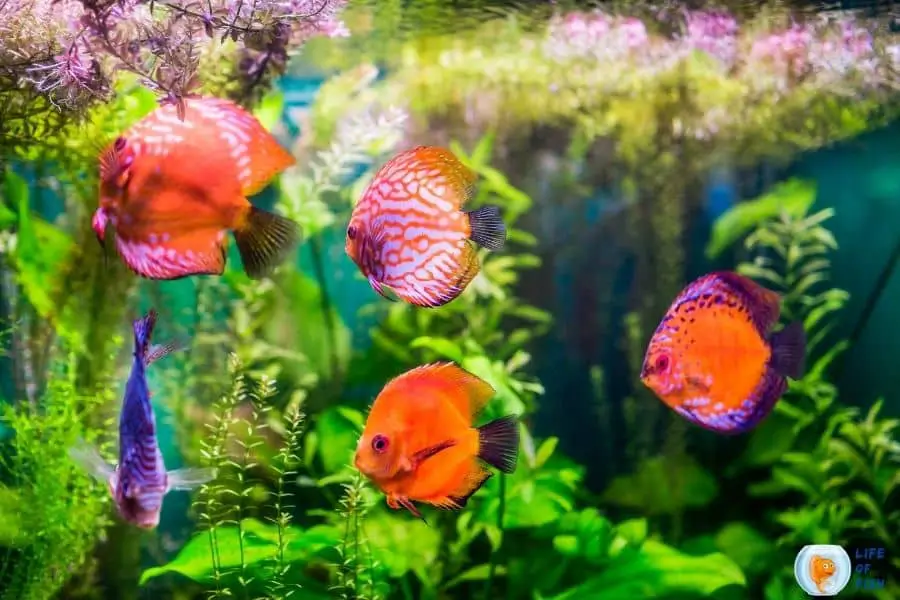
Summary
If you want to keep a planted tank, you can use either tap water or RO water. Always ensure that the necessary water conditions and parameters are met when using either one of these.
Although RO water is best for planted aquariums, keep in mind that using RO water is costly and time-consuming and needs a lot of commitment and accuracy.
It is better not to use RO water unless required. On the other hand, tap water can be a cheaper solution when done correctly. You must first dechlorinate the water by using a water conditioner.
However, if the tap water in your area is hard, you either have to use a demineralization product or use RO water.
Read Next: Marimo Moss Carpet by Marimo Moss Balls | 16 Amazing Facts |
